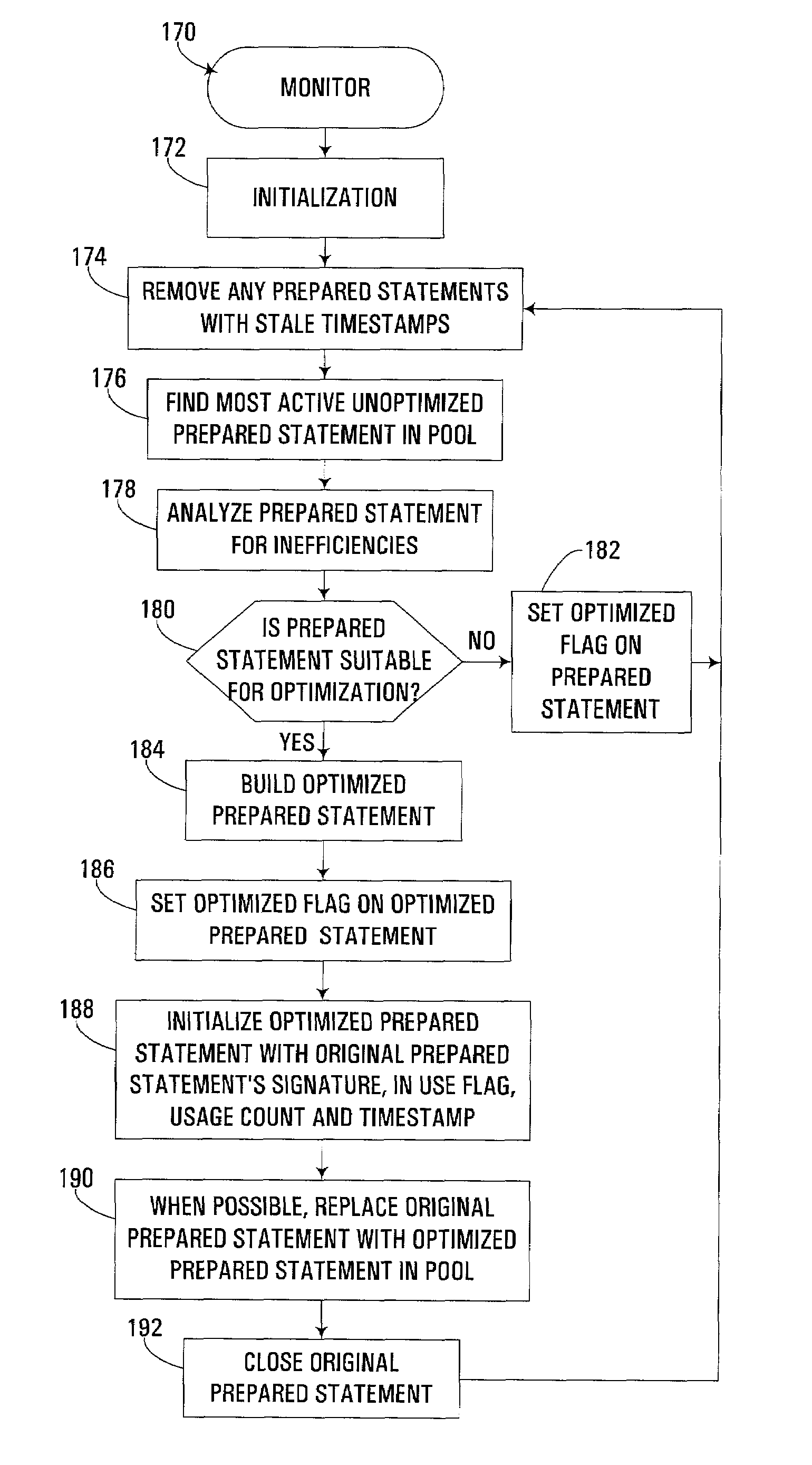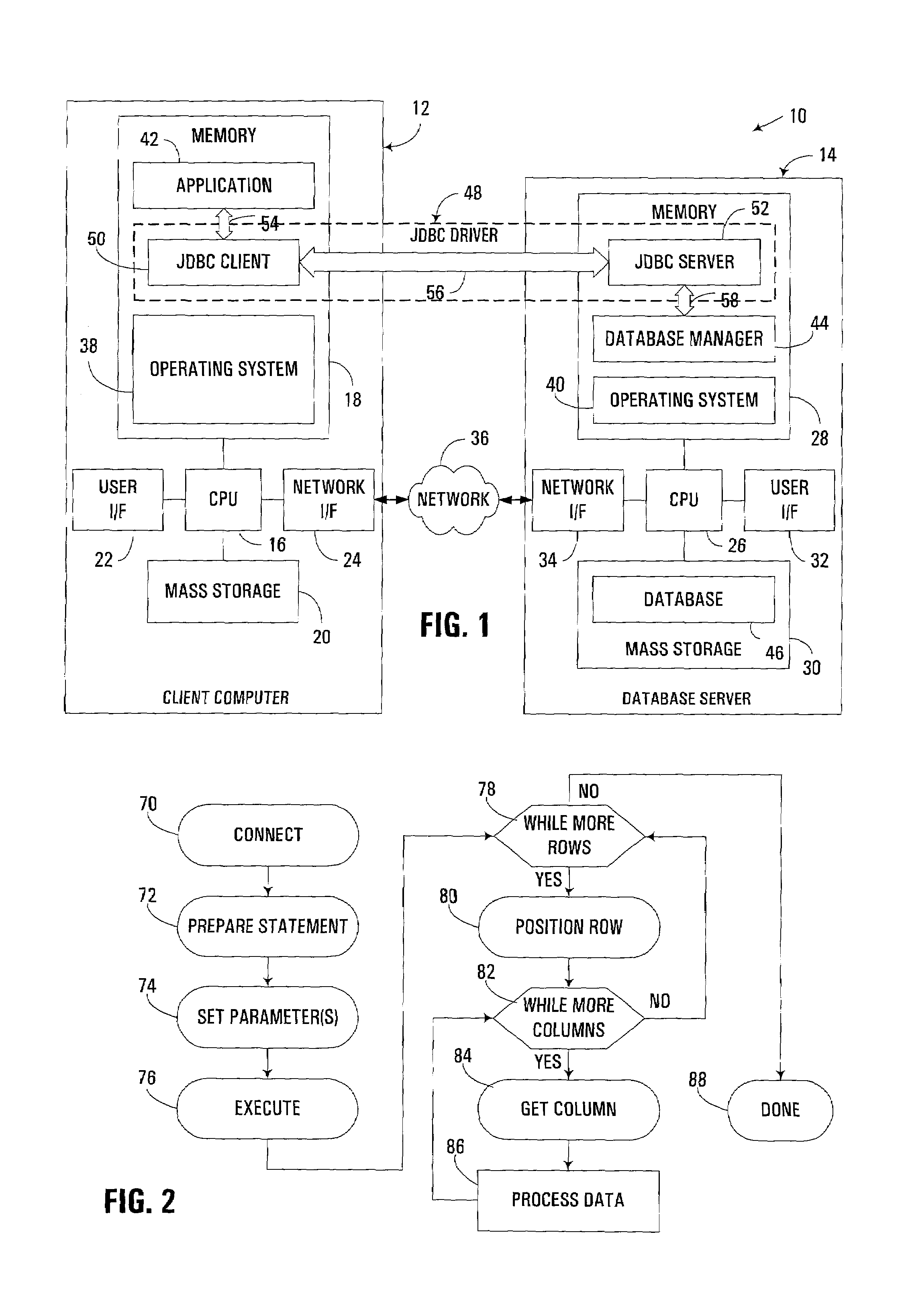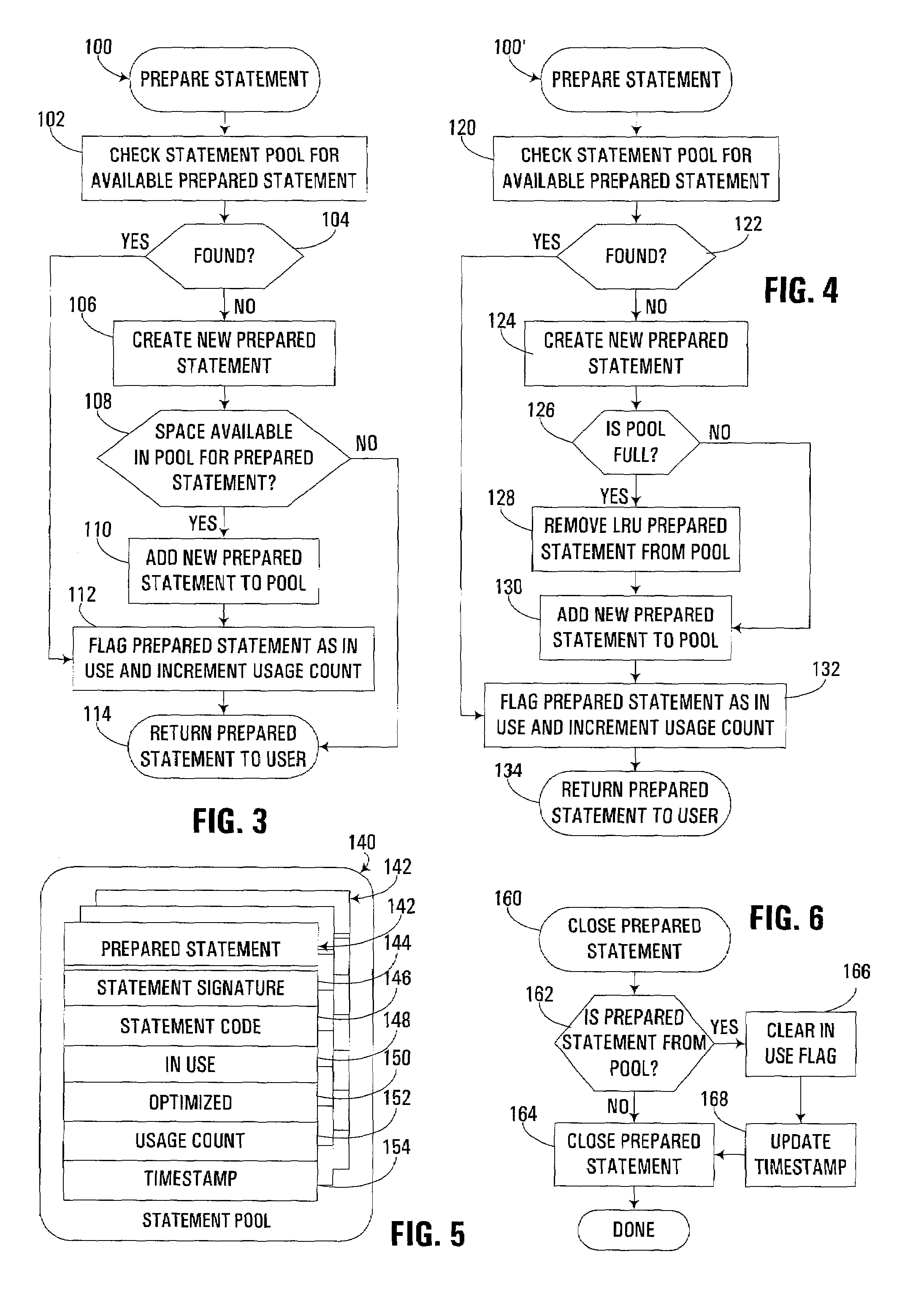Dynamic optimization of prepared statements in a statement pool
a technology of dynamic optimization and prepared statements, applied in the field of database management systems, can solve the problems of increasing the amount of computing resources required to manage such a database, requiring enormous resources to handle the heavy workload placed on such systems, and further increasing information volume and workload. the effect of increasing throughput, improving database performance, and positively affecting a client application
- Summary
- Abstract
- Description
- Claims
- Application Information
AI Technical Summary
Benefits of technology
Problems solved by technology
Method used
Image
Examples
Embodiment Construction
[0028]The embodiments discussed hereinafter implement dynamic optimization of prepared statements in a statement pool to optimize the execution of such prepared statements. The dynamic optimization typically occurs in a background process, and outside of the scope of a client application, thus permitting many client applications to reap the benefits of such dynamic optimization without any special configuration or adaptation. Moreover, by maintaining such optimization beyond the scope of a client application, it may also be possible to optimize platform-or database-independent prepared statements for specific use in connection with a particular platform and / or database, thus improving the portability of the application code.
[0029]Practically any optimization that may be implemented in connection with database queries may be applied to pooled statements consistent with the invention. One specific optimization described hereinafter, for example, attempts to modify the manner in which ...
PUM
 Login to View More
Login to View More Abstract
Description
Claims
Application Information
 Login to View More
Login to View More - R&D
- Intellectual Property
- Life Sciences
- Materials
- Tech Scout
- Unparalleled Data Quality
- Higher Quality Content
- 60% Fewer Hallucinations
Browse by: Latest US Patents, China's latest patents, Technical Efficacy Thesaurus, Application Domain, Technology Topic, Popular Technical Reports.
© 2025 PatSnap. All rights reserved.Legal|Privacy policy|Modern Slavery Act Transparency Statement|Sitemap|About US| Contact US: help@patsnap.com



